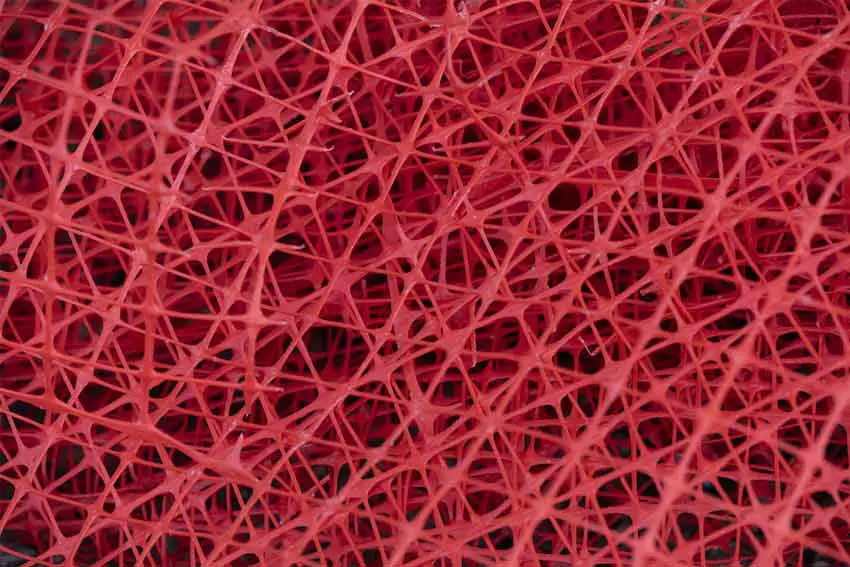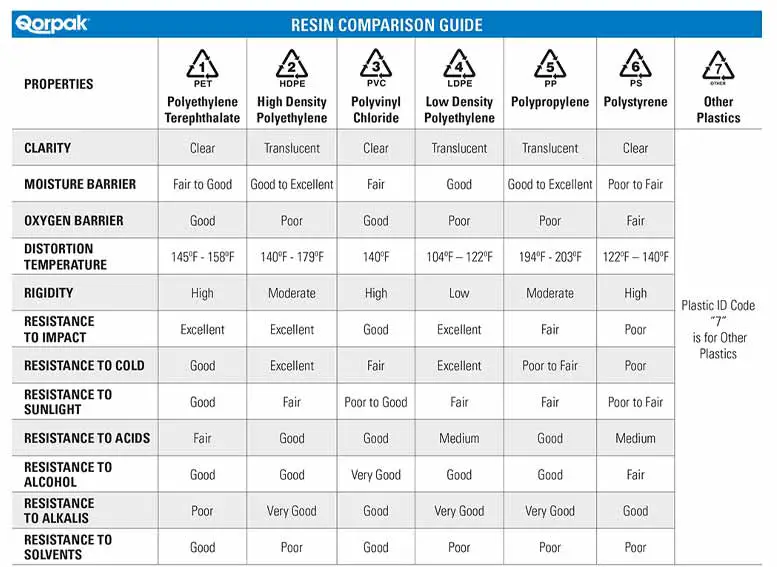When you go insane to protect your garden from the nuisance of weeds, you may seek the best solution to eliminate the annoying problems. The plastic barrier for gardens is the best way to protect your garden from the severe irritation of weeds, sometimes from insects or even from rabbits, dogs, etc.
To use a plastic barrier in the garden, first of all, you just need to weed out, clean the soil, apply mulch properly to the ground, and then install the plastic cover in the garden like a metal barrier as it can accommodate the plant adequately. You can spread the plastic barrier to the specific bed for the plants in the garden and then puncture little to install the plant there.
What is a Plastic Barrier for Gardens?

The plastic barrier is undoubtedly one of the most excellent strategies for creating the ideal bed for your plants in the garden for the highest yield. Plastic barriers raise soil warmth, kill soil-borne pests and pathogens, and eliminate weeds.
Moreover, plastic barrier, also known as soil solarization, is an environmentally friendly procedure that can improve soil vitality and prevent the proliferation of pests and pathogens. It also increases the quality of the ground mulch, making the soil more fertile.
In the rainy season, the soil doesn’t get soggy clogged water; even the ground can sustain adequate water. The plastic barrier is very functional during the winter to protect the plant from frost and snowfall.
It can facilitate preserving moisture in the soil, preventing the bed from getting filthy. Again, the earth obtains the appropriate circumstances to become fertile and viable.
How to Use a Plastic Barrier in Gardens
Before using a plastic barrier in the garden, you must remember that a proper bed of soil needs to create by applying an adequate amount of mulch. There are some necessary conditions and procedures to use a plastic barrier in your garden properly like the wood barriers.
Remove The Weeds and Rubbish from The Soil
Weeds are the main enemy of plants, and they resist even the most excellent harvest. So, first and foremost, you should eliminate the weeds, twigs, rocks, and other debris from the soil and the dead stem.
Some weeds, rhizomes, tubers, or bulbs remain beneath for a few days before emerging. As a result, you must cultivate the entire bed of the garden or cornfield and remove the leftover weeds.
Make The Proper Bed of Soil
You must first create a perfect soil bed before covering the plastic barrier. Cultivate the soil several times, apply adequate mulch, and keep it in the sun for a few days.
When the soil conditions are suitable for planting, and the entire bed of soil is moistened, you may be ready to cover the bed with a plastic barrier.
Cut and Fit Plastic Barrier According to Bed
Firstly, cut the plastic barrier into several pieces according to the bed size and put them together as they are linked to the bed’s soil. Align them six inches apart because if you attach the entire plastic barrier to the bed and any portion pierces or cuts, the whole region will be ruined.
Use Landscape Pins or Anchors to Install The Plastic Barrier
After appropriately positioning the plastic barrier, secure it to the ground using a landscape pin or anchors. There is a need for 8 to 10-inch gaps between the pins or anchors, enabling the edge to collapse.
Cover The Plastic Barrier with Non-organic Mulch
Cover the plastic barrier with non-organic mulch as if no weeds can grow there. Because organic mulch is favorable for the sprout of weeds.
Gravel and rubber mulch are two effective non-organic mulches for covering the plastic barrier.
Types of Plastic Barriers for Gardens

In the garden, many plastic barriers are used to cover the bed. There are diverse variations among them in terms of stiffness, distortion, temperature, moisture, oxygen barrier, resistance to cold and sunshine, and even contact with acid, alcohol, alkalis, and solvents.
Polyethylene Terephthalate Plastic Barrier
Polyethylene terephthalate plastic barrier is sturdy, transparent, and resistant to any impact, even cold and sunlight. The distortion temperature is about 145 to 158 degrees Fahrenheit, along with excellent rigidity.
Polypropylene Plastic Barrier
Polypropylene is a common plastic barrier with translucent clarity, a distortion temperature of 194 to 203 degrees Fahrenheit, moderate stiffness, and moderate resistance capability.
Polyvinyl Chloride Plastic Barrier
Polyvinyl chloride plastic barrier is opaque, has an excellent oxygen barrier, a distortion temperature of 140 degrees Fahrenheit, high stiffness, and a relatively good resistance capacity. Polyvinyl chloride is a versatile material known for its stiffness.
Polystyrene Plastic Barrier
Polystyrene plastic barrier is a synthetic polymer that is transparent and brittle in quality, with a distortion temperature of 122 to 140 degrees Fahrenheit, high rigidity, and comparably poor resistance capability. Polystyrene plastic barrier is cost-effective and most frequently used.
High-Density Polyethylene Plastic Barrier
High-density polyethylene plastic barrier has a translucent clarity, outstanding moisture barrier capacity, distortion temperature of 140 to 179 degrees Fahrenheit, fairly good resistance capacity, and moderate rigidity. It serves as a long-lasting, adaptable, and cost-effective as utilizing plastic barriers.
Low-Density Polyethylene Plastic Barrier
A low-density polyethylene plastic barrier is less costly than high-density polyethylene plastic barrier. It also has transparent clarity, a distortion temperature of around 104 to 122 degrees Fahrenheit, and an Excellent resistance capability.
Compared to other materials, low-density polyethylene is a low-cost, high-quality material.
Benefits of Using Plastic Barriers for Gardens

The plastic barrier is intended chiefly to control weed growth and kill the extent. Because the plastic layer is thin, it will only last a few days or weeks to deteriorate due to the harsh environment.
To maintain the superb condition of the soil’s fertility, you cannot apply weedicide, insecticide, or pesticide to kill the weeds and pathogens. Furthermore, your plant will be regulated to thrust weeds, pathogens, and other insects away.
But you may impose a bed of mulch to prolong its longevity. Using a plastic barrier, you can keep weeds and pathogens out of your garden.
To ensure happy gardening, most delicate plants require plastic barriers, and in harsh weather, they can protect the bed of the plants noticeably. Using a plastic barrier bed for the sapling will be better nourished.
Plastic garden barriers are also helpful to keep out dogs, rabbits, and other animals.
Disadvantages of Using Plastic Barriers for Gardens
Like the advantage of plastic barriers, there have some disadvantages too. Being covered with the plastic wall, the plant’s roots can’t get proper water, and the beneficial microorganisms sweat profusely for the impermeable coating layer of the plastic.
Again, when water flows from the plastic, not much water can’t reach the soil level; afterward, the roots may have even more severe breathing issues.
Recommendation for The Best Plastic Barrier for Gardens
Most plastic barriers are preferred for use in the garden because of their perspective features and stiffness; however, polyethylene terephthalate plastic is suggested as the best plastic barrier. Despite minor variances and price disparities, all plastic barriers are typically functional.
High-density polyethylene plastic barrier and polyvinyl chloride plastic barrier are also superior in quality. The enhanced qualities of plastic barriers last longer, even when confronted with adverse environments.
Low-quality plastic barriers degrade faster than high-quality products. So, relying on the qualities, you should buy a better plastic barrier for long-lasting uses if you don’t have price problems.
A short video on plastic being used as a weed killer:
Summary
Weeds and pathogens are an irritating nuisance in the garden, where weedicide and pesticides may not always be utilized. The plastic barrier is an ideal way for plants, particularly saplings, to escape weeds and pathogens, along with many other benefits.
Using plastic barriers on plant beds in the garden may protect you from various adverse situations. After all, the plastic barrier is essential for plants and the soil’s fertility like any regular garden barrier.
FAQs on Plastic Barriers
Q1. Is the plastic barrier good for the garden?
Ans: Yes, the plastic barrier is good for the garden, particularly for the growing saplings.
Q2. Which plastic barrier is best for long-lasting use purposes?
Ans: Among all the plastic barriers, the polyethylene terephthalate plastic barrier is best for long-lasting use purposes.
Q3. Which plastic barrier is cost-effective?
Ans: Polyvinyl chloride plastic barrier is cost-effective because of its inexpensive and good quality.
Q4. How do we use plastic barriers in the garden?
Ans: Make a decent plant bed, clean the entire place by eliminating weeds, then attach the plastic barrier according to the bed size.
Q5. Is a plastic barrier necessary for the plants in the garden?
Ans: A plastic barrier is required for the plants in the garden if you want healthy plants and a clean bed.

I’m Shofi, a passionate gardener and blogger. I have 10+ years of experience in gardening and hold certifications in horticulture and garden design. I share my knowledge and skills through my garden blog to inspire and educate others on the joys of gardening. I try to provide valuable information and create a community for gardeners of all levels to connect and learn. My ultimate goal is to inspire others to start their own gardens and connect with nature.
